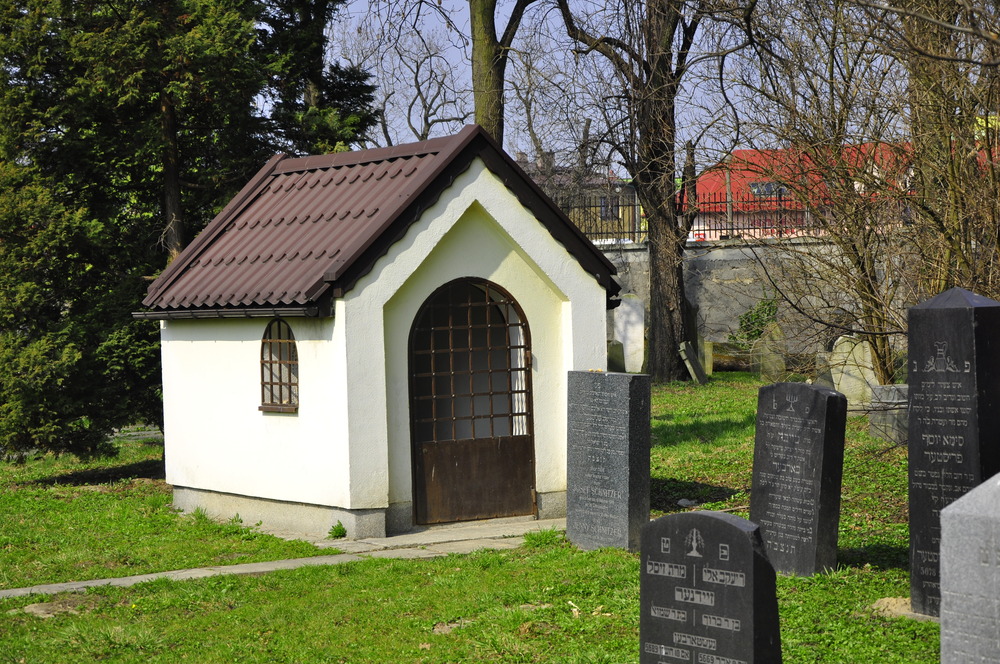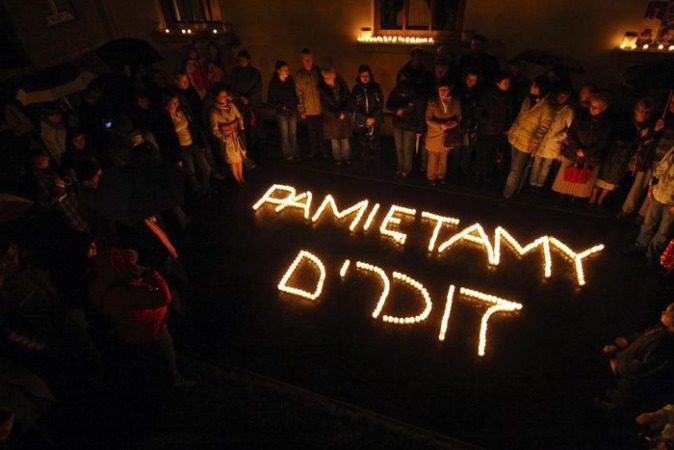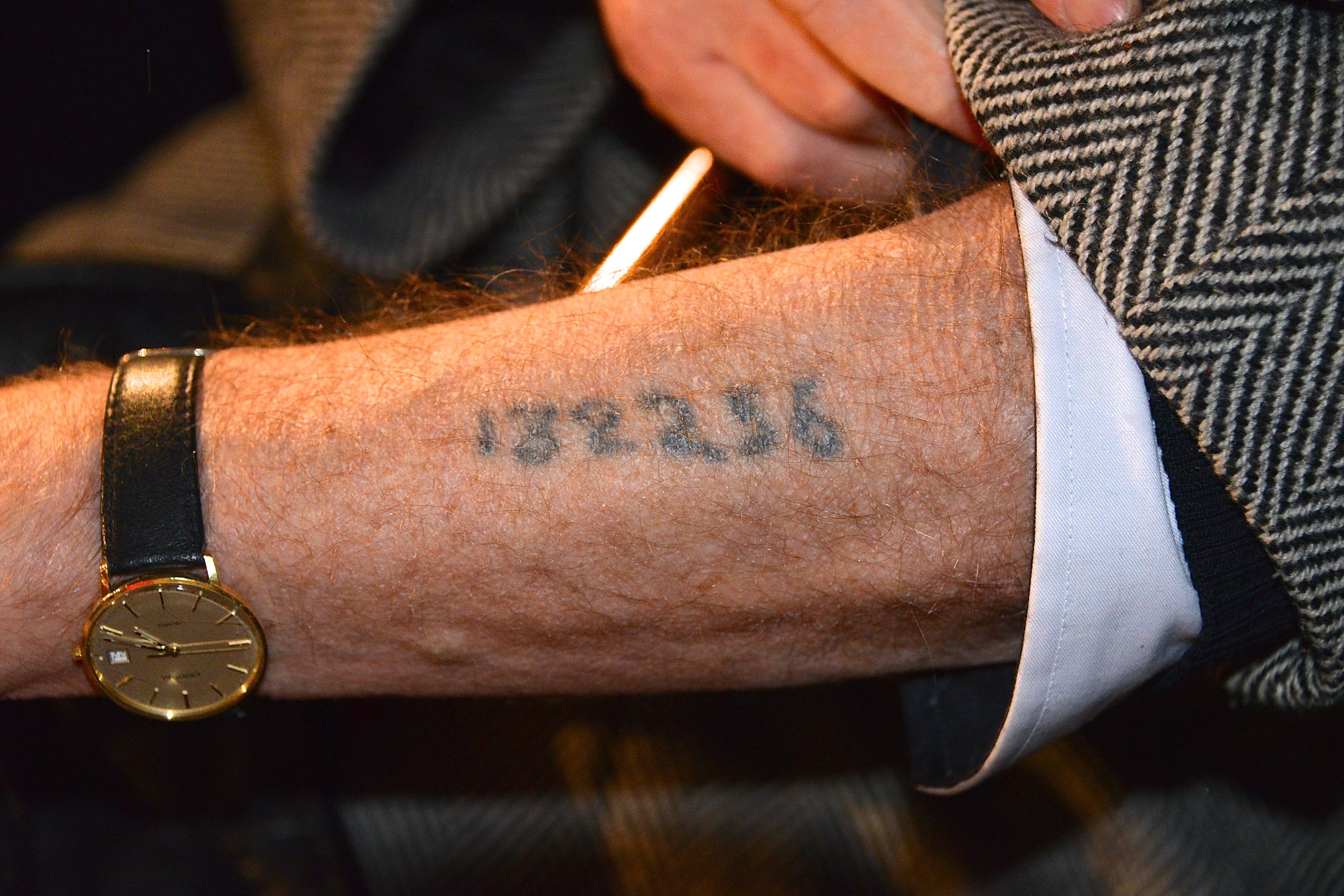|
Szymon Kluger
Shimson Kleuger (also Szymon Klieger or Szymon Klüger) (19 January 1925 – 26 May 2000) was a Polish Holocaust survivor and the last openly Jewish person to live in the town of Oświęcim, Poland, (german: Auschwitz) from 1962 until his death in 2000. Although Oświęcim had a Jewish community making up over half the town with 8,000 people before 1939, all other known Jewish residents, including the rest of Kleuger's family, had either fled in the large-scale exodus shortly before the occupation of Poland by Nazi Germany during World War II or were deported to concentration camps by Nazi authorities. Of the few survivors, Kluger was the only Jewish resident to return to Oświęcim, for which he became known as "The Last Jew in Auschwitz". This was especially prominent due to the nearby presence of the infamous Auschwitz concentration camp. Early life Childhood and family Kleuger came from a Hasidic Jewish family who lived in Oświęcim. Not much is known about his life. The ... [...More Info...] [...Related Items...] OR: [Wikipedia] [Google] [Baidu] |
Oświęcim
Oświęcim (; german: Auschwitz ; yi, אָשפּיצין, Oshpitzin) is a city in the Lesser Poland ( pl, Małopolska) province of southern Poland, situated southeast of Katowice, near the confluence of the Vistula (''Wisła'') and Soła rivers. The city is known internationally for being the site of the Auschwitz concentration camp (the camp is also known as KL or KZ Auschwitz Birkenau) during World War II, when Poland was occupied by Nazi Germany. Name The name of the city is of Slavic extraction, possibly derived from the owner of a Slavic gord which existed there in the Middle Ages. It has been spelled many different ways and known by many different languages over time, including Polish, Czech, German, and Latin. The town was an important center of commerce from the late Middle Ages onward. Fourteenth-century German-speaking merchants called it Auswintz; by the 15th century, this name had become Auschwitz. From 1772 to 1918 Oświęcim belonged to the Habsburg the Kingd ... [...More Info...] [...Related Items...] OR: [Wikipedia] [Google] [Baidu] |
Great Synagogue (Oświęcim)
The Great Synagogue in Oświęcim was, until World War II, the largest synagogue in Oświęcim, Poland. It was destroyed in November 1939. History Old synagogue The first mention of the synagogue in Oświęcim dates back to 1588. It was probably established around that year. Archival documents suggest that a townsman from Oświęcim, Jan Piotraszewski, gave or sold his land to the local Jewish community so that they could build their temple and cemetery. The first building was likely constructed from wood. This wooden synagogue was probably destroyed during the Swedish deluge. Over the centuries the building was twice destroyed by fire. The first time was on July 6, 1711. After this fire, a stone temple was constructed. Another fire damaged the building in 1863. The Great Synagogue The last synagogue, The Great Synagogue, was built in 1873 after the last fire on the site of the pre-existing synagogue. Between 1899 and 1900 it was redesigned and rebuilt by the architect Ca ... [...More Info...] [...Related Items...] OR: [Wikipedia] [Google] [Baidu] |
Auschwitz Jewish Center In Oświęcim
The Auschwitz Jewish Center is a non-governmental organization whose mission is to preserve the memory of the Jewish community of the city of Oświęcim and educate about the dangers of anti-Semitism, racism and other prejudices and intolerance. The Center runs the Jewish Museum in Oświęcim highlighting the history of the local Jewish community, looks after the only preserved synagogue in the city, the ''Khevre Loymdei Mishnayos'' Synagogue, and the house of the last Jewish resident of Oświęcim, Shimson Kleuger, which houses the Bergson café with exhibition and educational space. The Auschwitz Jewish Center makes the Jewish cemetery in Oświęcim, owned by the Jewish community in Bielsko-Biała, available to visitors. History In 1995, the Auschwitz Jewish Center Foundation was established in New York with the aim of creating a Jewish cultural and educational center in Oświęcim. A year later, a sister organization, Fundacja Edukacyjne Centrum Żydowskie in Oświęcim, w ... [...More Info...] [...Related Items...] OR: [Wikipedia] [Google] [Baidu] |
Yarmulkes
A , , or , plural ), also called ''yarmulke'' (, ; yi, יאַרמלקע, link=no, , german: Jarmulke, pl, Jarmułka or ''koppel'' ( yi, קאפל ) is a brimless cap, usually made of cloth, traditionally worn by Jewish males to fulfill the customary requirement that the head be covered. It is worn by all men in Orthodox Jewish communities during prayers and by most Orthodox Jewish men at all other times. Among non-Orthodox Jewish communities, those who wear them customarily do so only during prayer, while attending a synagogue, or in other rituals, and often women may also wear them in those communities. Etymology The term ( he, כיפה) literally means "dome", as the kippah is worn on the head like a dome. The Yiddish term might be derived from the Polish or the Ukrainian , perhaps ultimately from Medieval Latin ("cowl, hood"). It may also be of Turkic origin (akin to , meaning "rainwear"); the word is often associated with the phrase (), formed from the Aramaic w ... [...More Info...] [...Related Items...] OR: [Wikipedia] [Google] [Baidu] |
Mezuzah
A ''mezuzah'' ( he, מְזוּזָה "doorpost"; plural: ''mezuzot'') is a piece of parchment, known as a ''klaf'', contained in a decorative case and inscribed with specific Hebrew verses from the Torah ( and ). These verses consist of the Jewish prayer ''Shema Yisrael'', beginning with the phrase: "Hear, O Israel, the (is) our God, the is One". In mainstream Rabbinic Judaism, a ''mezuzah'' is affixed to the doorpost of Jewish homes to fulfill the mitzvah (Biblical commandment) to "write the words of God on the gates and doorposts of your house" (). Some interpret Jewish law to require a ''mezuzah'' in every doorway in the home except bathrooms (which are not a living space), laundry rooms and closets, if they are too small to qualify as rooms. The ''klaf'' is prepared by a qualified scribe ("'' sofer stam'') who has undergone training, both in studying the relevant religious laws, and in the more practical parts (i.e. carving the quill and practising writing). The verses ... [...More Info...] [...Related Items...] OR: [Wikipedia] [Google] [Baidu] |
Talit
A tallit ''talit'' in Modern Hebrew; ''tālēt'' in Sephardic Hebrew and Ladino; ''tallis'' in Ashkenazic Hebrew and Yiddish. Mish. pl. טליות ''telayot''; Heb. pl. טליתות ''tallitot'' , Yidd. pl. טליתים ''talleisim''. is a fringed garment worn as a prayer shawl by religious Jews. The tallit has special twined and knotted fringes known as ''tzitzit'' attached to its four corners. The cloth part is known as the "beged" (lit. garment) and is usually made from wool or cotton, although silk is sometimes used for a tallit gadol. The term is, to an extent, ambiguous. It can refer either to the "tallit katan" (small tallit) item that can be worn over or under clothing and commonly referred to as "tzitzit", or to the "tallit gadol" (big tallit) Jewish prayer shawl worn over the outer clothes during the morning prayers (Shacharit) and worn during all prayers on Yom Kippur. The term "tallit" alone, usually refers to the tallit gadol. There are different traditions regard ... [...More Info...] [...Related Items...] OR: [Wikipedia] [Google] [Baidu] |
Chicago Tribune
The ''Chicago Tribune'' is a daily newspaper based in Chicago, Illinois, United States, owned by Tribune Publishing. Founded in 1847, and formerly self-styled as the "World's Greatest Newspaper" (a slogan for which WGN radio and television are named), it remains the most-read daily newspaper in the Chicago metropolitan area and the Great Lakes region. It had the sixth-highest circulation for American newspapers in 2017. In the 1850s, under Joseph Medill, the ''Chicago Tribune'' became closely associated with the Illinois politician Abraham Lincoln, and the Republican Party's progressive wing. In the 20th century under Medill's grandson, Robert R. McCormick, it achieved a reputation as a crusading paper with a decidedly more American-conservative anti-New Deal outlook, and its writing reached other markets through family and corporate relationships at the ''New York Daily News'' and the ''Washington Times-Herald.'' The 1960s saw its corporate parent owner, Tribune Company, rea ... [...More Info...] [...Related Items...] OR: [Wikipedia] [Google] [Baidu] |
Identification Of Inmates In German Concentration Camps
Identification of inmates in German concentration camps was performed mostly with identification numbers marked on clothing, or later, tattooed on the skin. More specialized identification in Nazi concentration camps was done with badges on clothing and armbands. Numbers A practice was established to tattoo the inmates with identification numbers. Prisoners sent straight to gas chambers didn't receive anything. Initially, in Auschwitz, the camp numbers were sewn on the clothes; with the increased death rate, it became difficult to identify corpses, since clothes were removed from corpses. Therefore, the medical personnel started to write the numbers on the corpses' chests with indelible ink. Difficulties increased in 1941 when Soviet prisoners of war came in masses, and the first few thousand tattoos were applied to them. This was done with a special stamp with the numbers to be tattooed composed of needles. The tattoo was applied to the upper left part of the breast. In March 19 ... [...More Info...] [...Related Items...] OR: [Wikipedia] [Google] [Baidu] |
Gross-Rosen Concentration Camp
, known for = , location = , built by = , operated by = , commandant = , original use = , construction = , in operation = Summer of 1940 – 14 February 1945 , gas chambers = , prisoner type = mostly Jews, Poles and Soviet citizens , inmates = 125,000 (in estimated 100 subcamps) , killed = 40,000 , liberated by = , notable inmates = Boris Braun, Adam Dulęba, Franciszek Duszeńko, Heda Margolius Kovály, Władysław Ślebodziński, Simon Wiesenthal, Rabbi Shlomo Zev Zweigenhaft , notable books = , website = Gross-Rosen was a network of Nazi concentration camps built and operated by Nazi Germany during World War II. The main camp was located in the German village of Gross-Rosen, now the modern-day Rogoźnica in Lower Silesian Voivodeship, Poland; directly on the rail-line between the towns of Jawor (Jauer) and Strzegom (Striegau). ... [...More Info...] [...Related Items...] OR: [Wikipedia] [Google] [Baidu] |






.jpg)